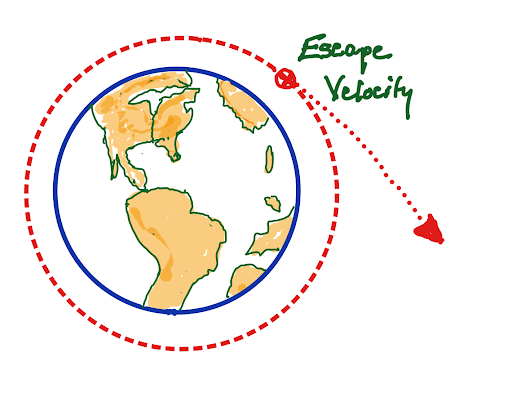Much of my work is with firms that have developed strong positions in existing markets and want to find a fresh lane to compete in. These firms have enjoyed success and are very skillful at mining out a niche once they have entered. They routinely are able to improve the efficiency of sales, delivery, and innovate strongly within their market boundaries.
But in every endeavor, maturing happens, and at some point, this organic approach and its extraordinary focus on operational efficiency hits a wall. When this pressure exerts itself, you see it in margins first, with lots of requests for price relief from the sales force. In later stages, you see the top line begin to droop, despite the heroic efforts of the sales force to sustain momentum.
When it comes to finding that next niche, the powerful truth is that the core business is a tractor beam with a huge pull that makes it very hard to maintain momentum to get to the next business arc.
I have helped firms for a number of years develop strong options, only to see them gradually whittle themselves back down to the one that almost matches their core business.
Underappreciated Tools to Escape the Orbit
The good news is that these same firms have tremendous potential within them, derived from the knowledge that comes from winning the “micro battles” in markets that can contribute to powerful, fresh market moves. That same relentless focus on current clients, when focused on emergent client needs, leads to strong fresh performance.
The secret is twofold:
- First, the emergent client needs are discovered, not analyzed into existence. This demands a shift in mindset (i.e., how can I learn the most for the least investment?).
- Second, we need to present those needs to the firm in a way it can (and will) take action on them. For this note, we’ll look at tools that solve the latter (If you are interested in getting started on the first point, see posts here, here, and here).
#1: Partitioning
What it is: Keeping individual work separated from group work. This helps the individuals on the team do their own personal creative work before coming to the group “commons.”
How to do it: Complete 1:1 interviews and homework prior to group work. I encourage team leaders to create soft accountability and have team members share their work prior to the meeting. If someone is frequently unable to complete this step, consider asking them to sit out on the group work.
Why it works: In our firms, we get comfortable showing up and “riding along,” where one or two creative people provide all the content that everyone else riffs on. By setting boundaries and encouraging independent work, the group gets more creative content, and doesn’t miss the opportunity to hear from the all-important “quiet ones.”
#2: Curating
What it is: So often we put together teams with those who are available. By being sure to draft the best players that “fit to the role,” team richness and performance soar.
How to do it: Use a clear strategy of recruiting team members by subject matter expertise, communication preferences, and mindset. In our Complete Growth Leader work, we identify four key styles that are needed for a rich team DNA.
Why it works: Diverse and orthogonal membership on the team that formulates the strategy is the most underutilized superpower that operationally efficient firms can deploy. By purposefully increasing the richness and backgrounds of the team members in multiple dimensions, rich, fresh ideas are much more frequent.
#3: Focal Pointing
What it is: Athletes create a laser-like visual focus on specific points of orientation during difficult shots, routines, and stressful situations. This allows them to stay focused on what matters most, rather than our common distractions.
How to do it: In this context, we intentionally focus outside the conference room walls of the firm. We design every question, using all our resources and relationships in the service of bringing fresh external data and insight to the table.
Why it works: By setting the focal point, it allows the group to self-regulate when it slips into an internal view. By setting an expectation of working from externally validated fact sets, the output gets richer and better anchored.
Putting it All Together
When a firm has a deep competence in operations, the pattern is that they will always find it difficult to find a fresh path without strong sponsorship and help from an independent source. I have developed a tested and comprehensive approach to taking the steps that have created powerful options for firms ranging from consumer-facing services to manufacturers who source the construction industry.
So how far can this take you? In my work, I have seen firms find and scale fresh product lines that contribute meaningfully to earnings in one annual strategy cycle. Beyond these direct effects is a cumulative return on investment by installing a process and mindset that leads everyone to be on their toes looking for fresh insight and opportunity.
If you are interested in learning more about the full range of how we can help you get started, please contact me by putting a call on the calendar with this link.
Related Posts…


